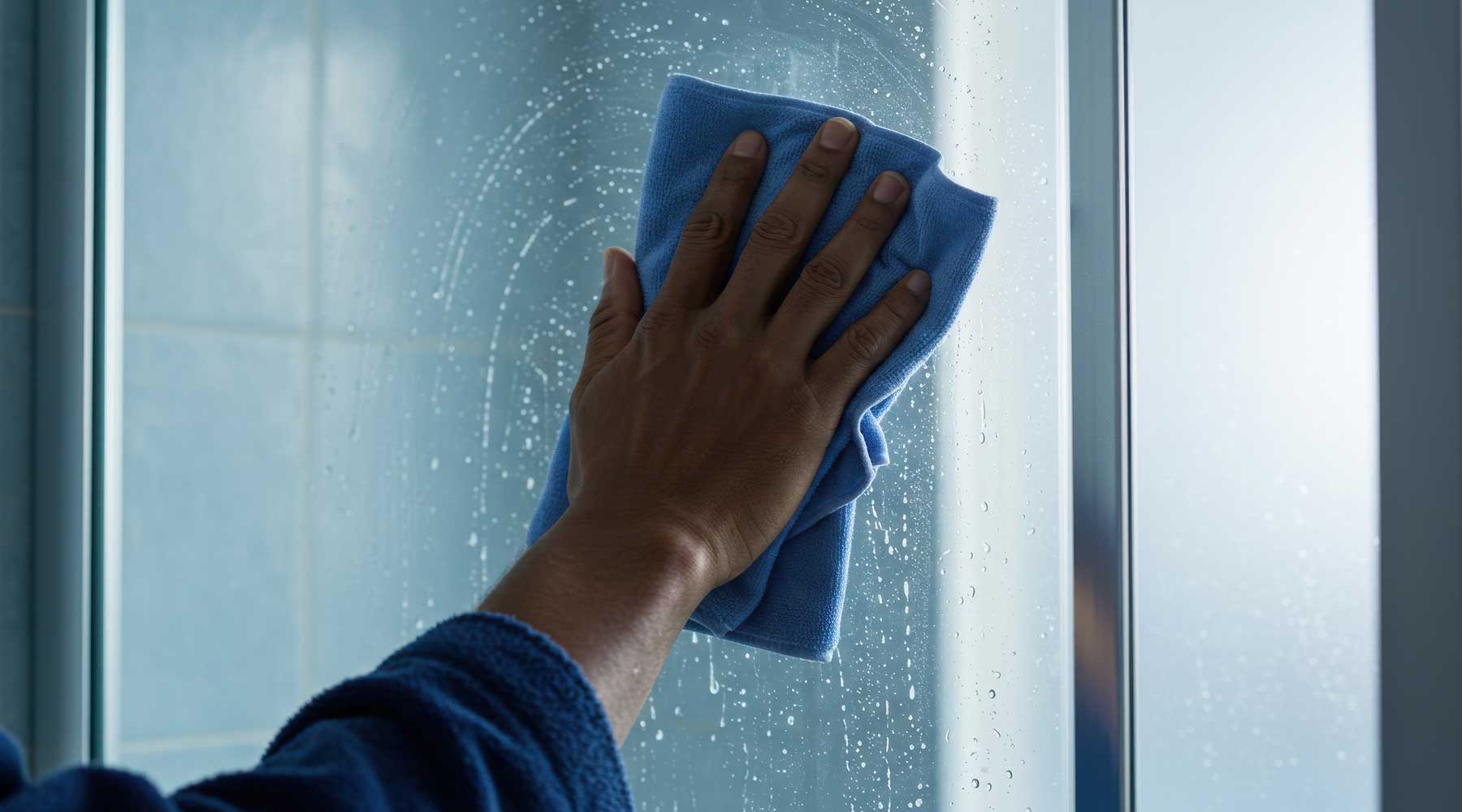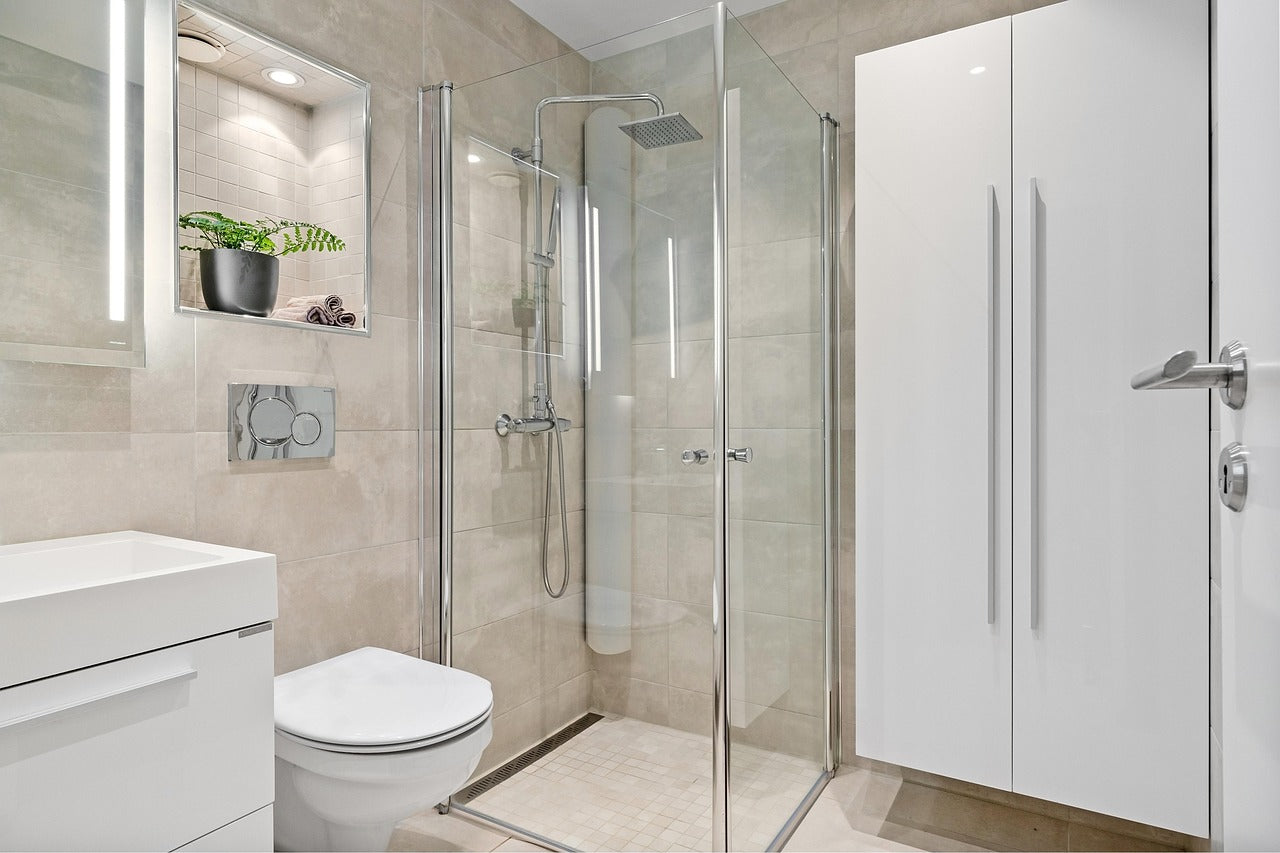What is Hydrophobic Coating and How Does It Work?
Clear surfaces, such as shower glass, car windshields, and solar panels, are constantly exposed to water, dirt, and contaminants. This exposure causes spotting, staining, and degradation, making cleaning more challenging over time.
A hydrophobic coating is a type of nanotechnology that repels water, protects surfaces, and makes cleaning easier. This article explains what hydrophobic coatings are, how they work, and the various DIY glass coating solutions DFI offers.
Understanding Hydrophobic Coating
The term hydrophobic comes from the Greek words “hydro” (water) and “phobos” (fear). Quite literally, a hydrophobic coating is “afraid of water.” This property means the coating repels water rather than allowing it to spread out or soak in.
When applied to a surface such as glass, a hydrophobic coating creates an invisible barrier that reduces surface energy. This makes it harder for water molecules to stick and form droplets that spread or leave behind mineral deposits. Instead, water beads up and rolls away—taking dirt and other contaminants with it.
The Science Behind Hydrophobicity
Every solid material has a property called "surface energy", which determines how liquids interact with it.
- High-Surface-Energy Materials: Found in untreated glass, this type of surface attracts water, whereby droplets spread out, increasing the contact area.
- Low-Surface-Energy Materials: Similar to Teflon™, this type of surface repels water, whereby droplets stay rounded with minimal contact, making it difficult for contaminants to adhere.
Hydrophobic coatings lower a surface’s energy by forming a nanoscale layer of molecules with water-repellent properties. This creates what’s called a high contact angle—the higher the angle, the more rounded the droplet, the less sticking, and the easier the runoff.
Types of Hydrophobic Coatings
While all hydrophobic coatings aim to repel water, they can be formulated and applied in different ways:
- Silane/Siloxane-Based Coatings: Common for glass and ceramics, chemically bonding for durability.
- Fluoropolymer Coatings: Extremely low surface energy, often used in industrial applications.
- Nanostructured Coatings: Inspired by lotus leaves, using microscopic textures for maximum repellency.
- Hybrid Coatings: Combine chemistry and nanostructures for enhanced performance.
DFI’s Clear-Fusion™ V is a patented, silane nanocoating solution, that can easily be applied to a variety of surfaces such as shower doors, glass railings, windows, tabletops, and much more. Other DIY coating products include Pro Solar™ Coating and Windshield Defender™ NanoPax®.
Key Benefits of Hydrophobic Coatings
1. Easier Cleaning
Water and dirt struggle to stick to surfaces, so you spend less time and effort cleaning, using milder products.
2. Long-lasting Clarity
By stopping water spots and mineral buildup, glass looks bright and clear for the long term.
3. Protection from Corrosion and Etching
Hydrophobic coatings shield glass from damage, reducing corrosion and etching caused by contaminants.
4. Enhanced Safety
On windshields, water beads and slides off quickly, giving clearer sightlines and safer driving in rain.
5. Sustainability
Using fewer cleaning chemicals and less water makes maintenance more environmentally friendly.
Everyday Applications of Hydrophobic Coatings
- Windows & Shower Doors: Great for helping reduce cleaning time and keeping clean and clear.
- Automotive Windshields: A no brainer for repelling rain and improving visibility.
- Solar Panels: Exceptional for preserving glass integrity and increasing energy output.
- Commercial Glass: Help with enhancing glass appearance, as well as reducing maintenance costs and time.
- Marine: A fitting solution for protecting against corrosion and improving visibility through all windows.
Professional Vs. DIY Coatings
When it comes to hydrophobic coatings, you’ll find two main options: professional coatings and DIY coatings. Both work to make surfaces water-repellent and easier to clean, but they differ in how they’re applied and how long they last.
Professional coatings are applied by trained installers using specialized tools and equipment. They create a stronger bond to the surface, which means better protection and longer-lasting results—often several years with proper care. These coatings are ideal for large areas or high-traffic surfaces like building glass, commercial vehicles, or marine applications.
DIY coatings, on the other hand, are designed for quick and simple application at home. They’re great for smaller projects like car windshields, shower doors, or home windows. While DIY products typically don’t last as long as professional ones, they still provide excellent water-repelling performance and make everyday cleaning much easier.
Maintenance and Longevity
Hydrophobic coatings are durable, but like any surface treatment, they can wear over time. Longevity depends on usage, exposure, and cleaning practices.
Tips for extending performance:
- Use non-abrasive cleaners
- Avoid harsh acids or alkalis
- Reapply coating as recommended
The Future of Hydrophobic Coatings
Innovation is driving hydrophobic technology toward even greater capabilities, including self-healing coatings, multifunctional protective layers, and eco-friendly formulas.
DFI continues to lead this progress, ensuring customers—whether homeowners, auto enthusiasts, or industry professionals—have access to the best surface protection solutions available.

Final Thoughts
Hydrophobic coatings change the way we protect and maintain surfaces, offering clarity, durability, and reduced maintenance for glass and other materials. After all, they are found in the natural world, serving a similar purpose in providing protection . So, whether you are looking to protect shower doors, automotive windshields, or solar panels, there’s a product for every need.





Leave a comment
This site is protected by hCaptcha and the hCaptcha Privacy Policy and Terms of Service apply.